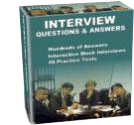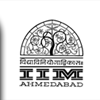|
- Definition:
Nano electronic devices fall into two classes: tunnel devices and ballistic transport devices. In Tunnel devices single electron effects occur if the tunnel resistance is larger than h/e = 25 K ��. In Ballistic devices with cross sectional dimensions in the range of quantum mechanical wavelength of electrons, the resistance is of order h/e = 25 K ��. This high resistance may seem to restrict the operational speed of nano electronics in general. However the capacitance values and drain source spacing are typically small which gives rise to very small RC times and transit times of order of ps or less. Thus the speed may be very large, up to THz range. The goal of this seminar is to present the models an performance predictions about the effects that set the speed limit in carbon nanotube transistors, which form the ideal test bed for understanding the high frequency properties of Nano electronics because they may behave as ideal ballistic 1d transistors.
Ballistic Transport- An Outline
When carriers travel through a semiconductor material, they are likely to be scattered by any number of possible sources, including acoustic and optical phonons, ionized impurities, defects, interfaces, and other carriers. If, however, the distance traveled by the carrier is smaller than the mean free path, it is likely not to encounter any scattering events; it can, as a result, move ballistically through the channel. To the first order, the existence of ballistic transport in a MOSFET depends on the value of the characteristic scattering length (i.e. mean free path) in relation to channel length of the transistor.
This scattering length, l , can be estimated from the measured carrier mobility where t is the average scattering time, m* is the carrier effective mass, and vth is the thermal velocity. Because scattering mechanisms determine the extent of ballistic transport, it is important to understand how these depend upon operating conditions such as normal electric field and ambient temperature.
Dependence On Normal Electric Field
In state-of-the-art MOSFET inversion layers, carrier scattering is dominated by phonons, impurities (Coulomb interaction), and surface roughness scattering at the Si-SiO2 interface. The relative importance of each scattering mechanism is dependent on the effective electric field component normal to the conduction channel. At low fields, impurity scattering dominates due to strong Coulombic interactions between the carriers and the impurity centers. As the electric field is increased, acoustic phonons begin to dominate the scattering process. At very high fields, carriers are pulled closer to the Si-SiO2 gate oxide interface; thus, surface roughness scattering degrades carrier mobility. A universal mobility model has been developed to relate field strength with the effective carrier mobility due to phonon and surface roughness scattering:
Dependence On Temperature
When the temperature is changed, the relative importance of each of the aforementioned scattering mechanisms is altered. Phonon scattering becomes less important at very low temperatures. Impurity scattering, on the other hand, becomes more significant because carriers are moving slower (thermal velocity is decreased) and thus have more time to interact with impurity centers. Surface roughness scattering remains the same because it does not depend on temperature. At liquid nitrogen temperatures (77K) and an effective electric field of 1MV/cm, the electron and hole mobilities are ~700 cm2/Vsec and ~100 cm2/Vsec, respectively. Using the above equations, the scattering lengths are approximately 17nm and 3.6nm.These scattering lengths can be assumed to be worst-case scenarios, as large operating voltages (1V) and aggressively scaled gate oxides (10�) are assumed. Thus, actual scattering lengths will likely be larger than the calculated values.
Further device design considerations in maximizing this scattering length will be discussed in the last section of this paper. Still, the values calculated above are certainly in the range of transistor gate lengths currently being studied in advanced MOSFET research (<50nm). Ballistic carrier transport should thus become increasingly important as transistor channel lengths are further reduced in size. In addition, it should be noted that the mean free path of holes is generally smaller than that of electrons. Thus, it should be expected that ballistic transport in PMOS transistors is more difficult to achieve, since current conduction occurs through hole transport. Calculation of the mean scattering length, however, can only be regarded as a first-order estimation of ballistic transport.
To accurately determine the extent of ballistic transport evident in a particular transistor structure, Monte Carlo simulation methods must be employed. Only by modeling the random trajectory of each carrier traveling through the channel can we truly assess the extent of ballistic transport in a MOSFET.
1). Memorizing - this is absolutely the worst way to keep track of material. People are preoccupied with trying to remember the words to say and not the ideas behind the words (or with the audience). As a result, normal voice inflection disappears. With memorizing, mental blocks become inevitable. With memorizing it is not a matter of "will" you forget; it's a matter of WHEN!
2). Reading from complete text - Listening to someone read a speech or presentation is hated by most people. People say, "If that's all they were going to do is read their speech, I could have read it myself." I'm sure many of us have experienced this at least once while attending a conference or two. Below are some reasons why I believe people read poorly:
3). Using Notes - This is the most common way for remembering material. Using notes is better than reading since the speaker can have normal voice inflection and make more effective eye contact. If your notes are on the lectern, you probably won't move very far from them. If notes are in your hand, you probably won't gesture very much.
4).Using Visual Aids As Notes - Simple visual aids can effectively serve as headings and subheadings. Speak to the heading. Say what you want to say and move on. If you forget something, that's okay; the audience will never know unless you tell them.
Practice creating just a few meaningful headings to use and practice using only these headings as your "cues". This will take practice, but practicing using only these few words will force you to better internalize your speech.
|












